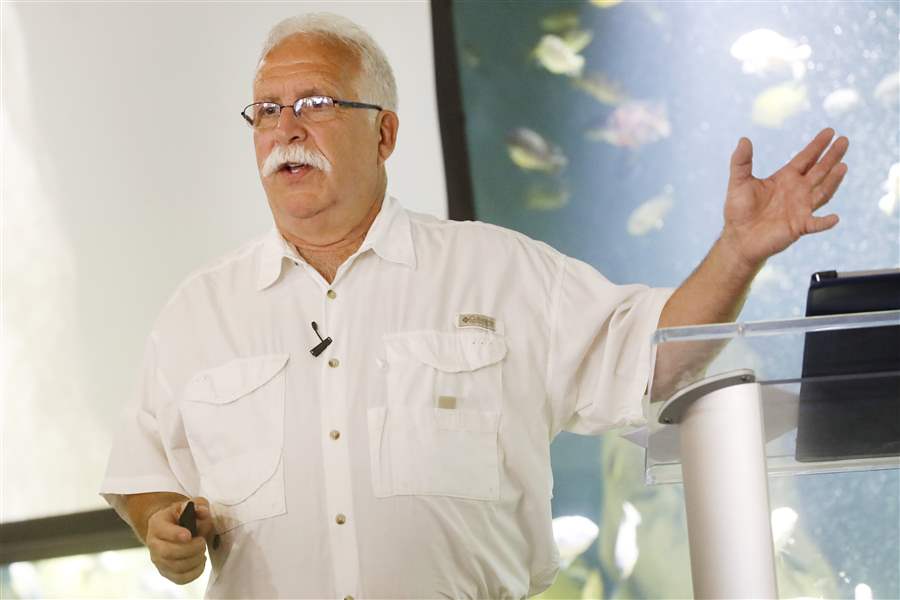
Lecturer at Toledo Zoo: Snakes are misunderstood
8/23/2018
Daniel Keyler, professor of Experimental and Clinical Pharmacology with the University of Minnesota, discusses the consequences and treatment options for venomous snake bites Thursday, August 23, 2018, at the Toledo Zoo.
THE BLADE/KATIE RAUSCH
Buy This Image
While most people believe snakes are a life-threatening species, Daniel Keyler feels otherwise.
“Snakes are just a misunderstood species”, said Mr. Keyler, a clinical and adjunct professor of experimental and clinical pharmacology at the University of Minnesota. “[They] are not huggable, but they're also a species of animals that is important to the ecosystem in ways people don’t appreciate.”

Daniel Keyler, professor of Experimental and Clinical Pharmacology with the University of Minnesota, discusses the consequences and treatment options for venomous snake bites Thursday, August 23, 2018, at the Toledo Zoo.
Mr. Keyler gave a lecture Thursday at the Toledo Zoo’s Malawi Event Center to help people understand snakes.
One of the most misunderstood concepts, Mr. Keyler said, is that snakes attack humans.
“Snakes don’t attack,” he said. “They will strike to bite you because they’re scared. They want to defend themselves.”
An average of 5,000 venomous snake bites are reported in America each year with 50 percent of the bites resulting in serious medical consequences.
There are 25 species of snakes in Ohio, 11 of which are in the Lucas County area, said Gregory Lipps, amphibian and reptile conservation coordinator at Ohio State University.
“In the immediate area, you’re not going to find any venomous stuff that is native to here,” said John Chastain, curator of herpetology at the Toledo Zoo.
He said people should avoid touching snakes when they cross paths with them to steer clear of any danger.
Especially when it comes to children, the venom can be more dangerous, Mr. Keyler said. This is because snakes inject the same amount of venom into children as they would into an adult, putting them at higher risk of experiencing serious health problems.
He added the average time to get antivenom treatment is four hours with the treatment taking 24 to 25 hours to work.
Mr. Keyler has been bit by a rattlesnake before while doing field work. However, he didn’t experience any serious medical problems since 25 percent to 30 percent of the time rattlesnakes don't inject venom, he said.
However, he advises individuals to seek medical help immediately to avoid experiencing respiratory arrest, a serious consequence that can prevent an individual from breathing.
In most cases, snakes are an unusual, but interesting species. Crossing paths with them can be “a teachable moment,” Mr. Keyler said.
Contact Areeba Shah at ashah@theblade.com, 419-724-6066, or on Twitter @areebashah.